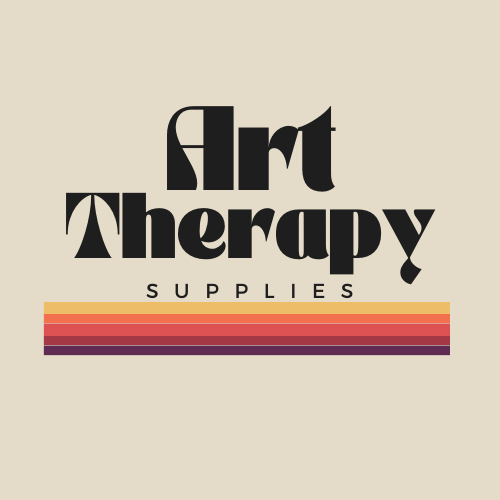Art has long served as a profound means of human expression, yet its impact on mental wellness is significant and frequently underestimated. In this blog, we delve into how engaging with art—whether through creation or appreciation—provides a therapeutic pathway to enhancing mental health. From painting to sculpture, the process of making or viewing art can function as a powerful tool for emotional healing and cognitive clarity. The therapeutic aspects of Art Therapy have garnered attention in various case studies, demonstrating the tangible benefits of artistic engagement for mental health.
Understanding the Connection Between Art and Mental Wellness
Art has been intricately linked to human emotions for centuries, allowing individuals to reflect their internal states and revisit complex feelings. In this section, we’ll explore the psychological dimensions of art, examining how it serves as a mirror for our emotions and a medium for exploring our mental landscapes.
When we observe a painting or listen to a piece of music, we often find ourselves resonating with the emotions conveyed. This connection is not mere coincidence; therapy clients frequently utilize art as a conduit to express feelings that may be difficult to articulate verbally. It plays a pivotal role in dismantling barriers we erect about ourselves, fostering a deeper understanding of our emotional states and enhancing mental wellness.
Furthermore, engaging with art can catalyze new perspectives, prompting us to reinterpret our challenges in various lights. For instance, an artist grappling with anxiety might channel those feelings into creating a hauntingly beautiful work that encapsulates their inner turmoil. This transformative process not only provides clarity but can also instill a sense of relief and healing.
The Science Behind Art Therapy
Art Therapy presents a structured methodology that marries creative expression with psychological techniques. In this section, we’ll examine research and compelling case studies that highlight how artistic activities influence brain functions, reduce stress levels, and facilitate emotional expression.
Neuroscientific studies indicate that engaging in art activates areas of the brain associated with emotions and creativity. Engaging in creative endeavors raises dopamine levels, a neurotransmitter heavily linked to pleasure and reward. This neurochemical response plays an essential role in mood regulation, cementing art's place as a valuable instrument in promoting mental wellness.
Robust case studies illustrate the effectiveness of Art Therapy in addressing conditions such as PTSD and depression. During sessions, individuals might create artwork depicting their traumas, but the act of doing so often leads to cathartic release. By unpacking painful memories through art, clients confront their feelings in secure environments, thereby fostering healing and deeper understanding.
Different Forms of Art That Promote Mental Wellness
From the visual arts to performing arts, each artistic form presents unique advantages in promoting mental wellness. In this section, we will explore how painting, music, dance, and even theatre can transform into valuable tools for relaxation, self-exploration, and emotional release.
Visual art—such as painting and drawing—enables individuals to articulate emotions without words. Many therapists advocate for clients to use paints and brushes to allow their feelings to emerge on the canvas, facilitating moments of profound discovery. A burst of color may signify happiness, while darker hues might reflect sorrow. This non-verbal expression can be highly therapeutic and validating.
Music, conversely, taps into our auditory senses and serves as a refuge for the mind. Whether one listens to calming melodies or engages in active music-making, immersion in sound has been shown to alleviate anxiety and elevate spirits significantly. Furthermore, dancing to rhythmic beats offers a physical release that translates into emotional relief, promoting overall wellness.
Theatre, with its fusion of performance and storytelling, allows participants to delve into complex emotions through role-play. This venue provides a safe platform to confront fears, share struggles, and even rehearse distressing scenarios. Participants often emerge transformed by the characters they portray, gaining insights into their emotional worlds. Such dynamic interactions with narratives cultivate empathy and foster emotional connection.
Practical Tips for Incorporating Art Into Your Life
This guide offers actionable suggestions to weave art activities into your daily routine to enhance mental health. Regardless of your artistic experience—whether you're an accomplished artist or just starting—there are plenty of accessible ways to embrace creativity.
To begin, allocate dedicated time each week for artistic pursuits. Perhaps you could spend one evening painting and another afternoon experimenting with clay. Establishing this routine can elevate art from a mere hobby to a purposeful ritual that nurtures your mental wellness.
Consider merging art with mindfulness techniques, for example, by practicing mindful drawing where you concentrate on each stroke and sensation as you create. Additionally, participating in community art classes or workshops fosters not only skill development but also social connections that significantly enhance your sense of belonging—an essential component of mental health.
Testimonials: Real-Life Stories of Art’s Healing Power
Real-life stories from those who have harnessed the power of art in their healing can be immensely empowering. This section shares inspiring accounts from individuals who have experienced transformative effects on their mental wellness through artistic practices.
Consider Sarah, a trauma survivor who found sanctuary in painting. She views her emotional journey as akin to a canvas—colors representing various moods and strokes narrating her internal battles. Each piece she created helped her transition from chaos to serenity, transforming her pain into vibrant artwork that inspires others.
Then there’s Mark, who sought solace in pottery during a bout of depression. Through molding clay, he discovered rhythm in the repetitive motions, which calmed his racing thoughts. This tactile experience offered him an elevated sense of mindfulness, enabling him to reconnect with himself and express emotions in unprecedented ways.
Embracing Artistic Journeys for Enhanced Mental Wellness
Ultimately, as we’ve explored, the therapeutic benefits of art reach far beyond aesthetics. Integrating art into our lives not only enhances our mental wellness but also provides essential outlets for emotional expression and creativity. Whether through professional therapy or personal exploration, embracing art can create a ripple effect of positivity throughout our mental health journeys.


